You can try running the resulting polygon through turf.buffer(result, 0, 'kilometers') (turf-buffer docs). If your result is invalid geojson then using a buffer of 0 should cleanse the geometry (remove the points/lines in the middle).
It is hard to say what will work for sure without seeing the actual GeoJSON of the result. Is there any way you can upload it to pastebin or something?
Update - Turf buffer did not work in this case. The only solution that I could get to work was doing this on the result of turf.union(p1, p2).
result.geometry.coordinates = [result.geometry.coordinates[0]]
You want to be careful with this solution as it removes everthing from the polygon other than the external ring.
To understand why/how this works, you will want to make sure you understand how the coordinates for geojson polygons work. From the geojson.org geojson polygon specification
For type "Polygon", the "coordinates" member must be an array of LinearRing coordinate arrays. For Polygons with multiple rings, the first must be the external ring and any others must be internal rings or holes.
The external ring is essentially the outline of your polygon. Any internal rings are usually represented as holes. In your case, the internal rings were actually lines.
When looking at the coordinates for a geojson polygon, you will notice that all coordinates are contained within an outer array. Here is an example of a geojson polygon with only a single (external) ring.
{"type": "Feature", "properties": {}, "geometry": {"type": "Polygon", "coordinates": **[ [ [1, 1], [1, 2], [1, 3], [1, 1] ] ]**
Notice that the first coordinate and last coordinate of a ringe must always be the same. That ensure that we get a closed shape (ie: polygon).
Now here is an example with an external ring, and an internal ring
{"type": "Feature", "properties": {}, "geometry": {"type": "Polygon", "coordinates": **[ [ [1, 1], [1, 2], [1, 3], [1, 1] ], [ [1, 2], [1, 3], [1, 1] ] ]**
Now if we apply the suggested solution to the above example, we would get the same coordinates as the first example because we are grabbing only the first set of coordinates from the polygon, which will always be the external ring. Any subsequent elements in the coordinates array will represent internal rings (which is what the lines were, even though they are technically not valid internal rings).
{"type": "Feature", "properties": {}, "geometry": {"type": "Polygon", "coordinates": **[ [ [1, 1], [1, 2], [1, 3], [1, 1] ] ]**
As you can see, we are removing all internal rings from the polygon. That is the reason that you must be careful with how you use this. If you ever have valid internal rings, it will actually get rid of those.
I think that the reason this happens is because your polygons (p1 and p2) share a border.



